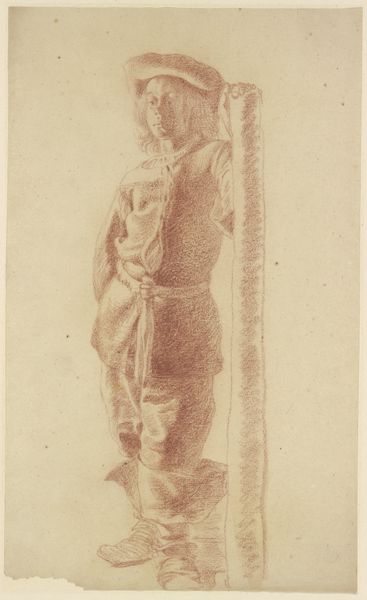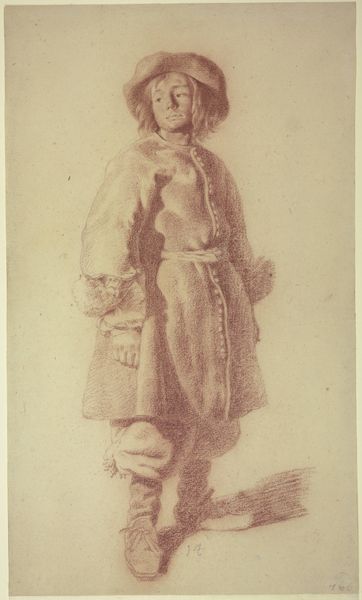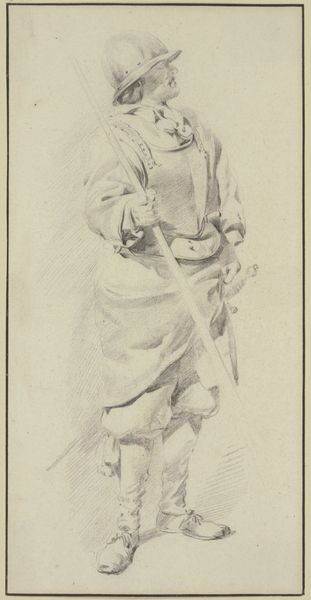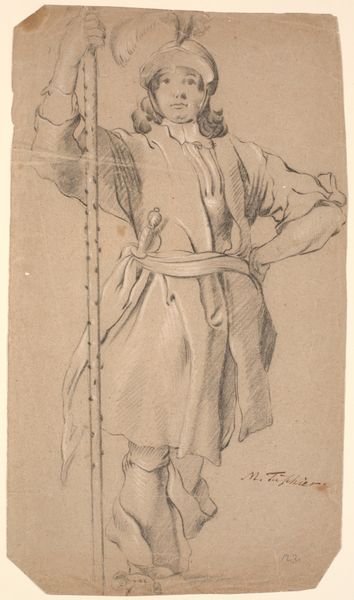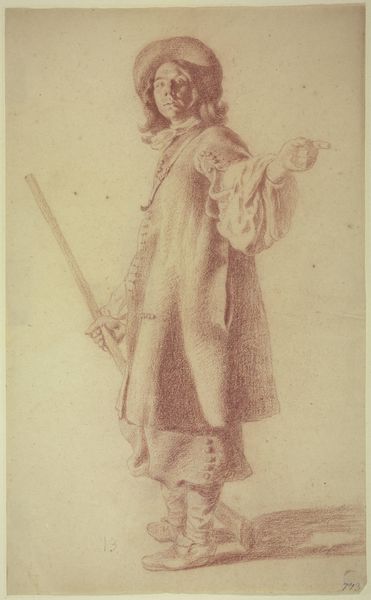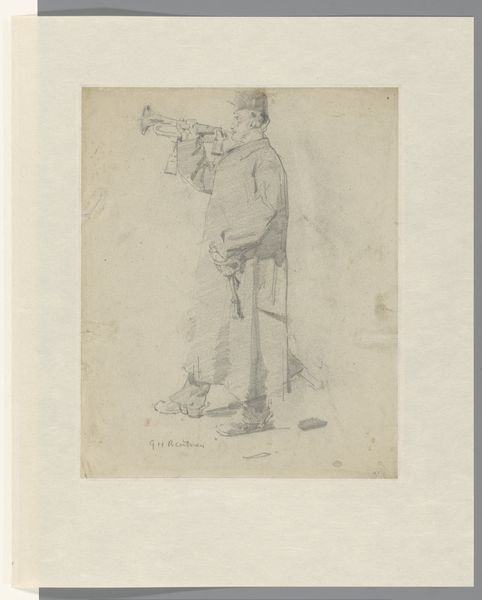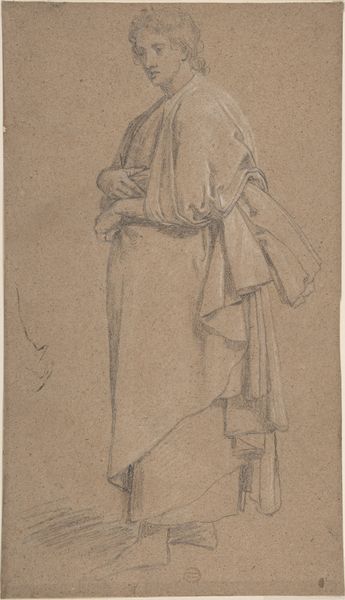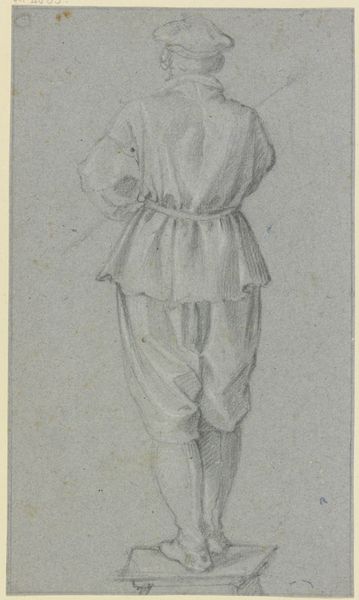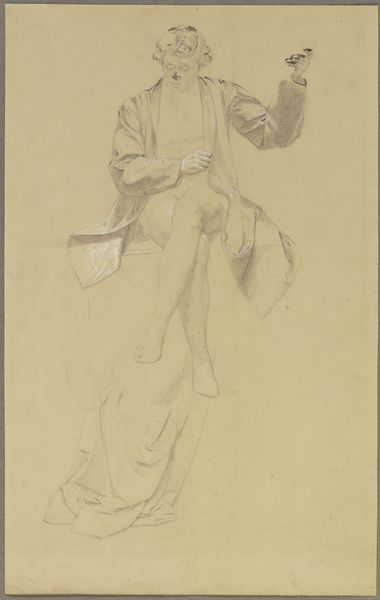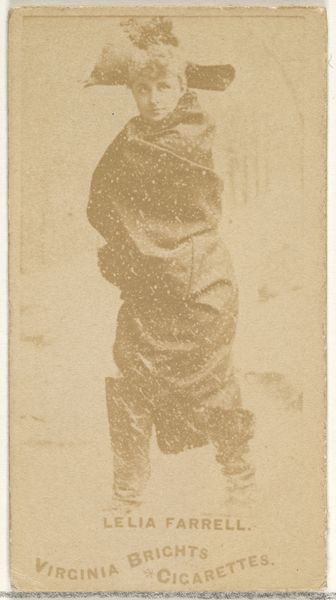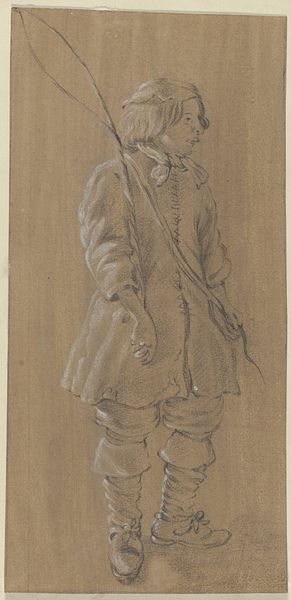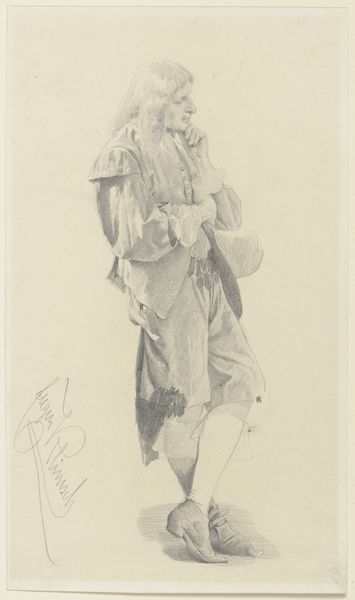
drawing, coloured-pencil, dry-media
portrait
pencil drawn
drawing
coloured-pencil
baroque
dry-media
14_17th-century
portrait drawing
Copyright: Public Domain
Editor: Here we have Gerard ter Borch the Younger's "Junger Mann, an einem Pfosten stehend," or "Young Man Standing by a Post," dating from about 1660 to 1667. It’s a drawing, made with colored pencil… it looks quite casual. I'm wondering what a specialist sees in it. What draws your eye to this piece? Curator: It’s the materiality that speaks to me first. Consider the relative scarcity of colored pencils in the mid-17th century. Their presence here immediately raises questions about ter Borch’s workshop practices, access to materials, and, crucially, the social status implied by such access. Was this a preparatory sketch? A presentation piece? The drawing’s purpose directly influences its interpretation, right? Editor: Right, I see your point. If the materials were rare and valuable, that changes the way we look at it. Does the type of paper used also tell us anything? Curator: Absolutely! The paper's texture, its watermark, even its dimensions – all are material clues. Did ter Borch use a commercially available paper, or was it custom-made? This would further illuminate the means of production, telling us volumes about ter Borch’s place within the art market and workshop culture of the Dutch Golden Age. Look at how lightly he renders details, seemingly prioritizing form over fine points. Why do you think he might've done that? Editor: Perhaps a demonstration piece intended to showcase speed and technique with limited, quality resources. Almost like a prototype. It definitely pushes boundaries between artwork and process. Curator: Precisely. The material evidence suggests we move beyond considering this merely as a portrait and contemplate it as an object embedded in a complex network of production and consumption. What can seemingly casual choices reveal about an artist’s economic position and working methods? Editor: I guess it highlights the connection of the art to the labor behind its making, which you can easily overlook. Thank you!
Comments
No comments
Be the first to comment and join the conversation on the ultimate creative platform.
